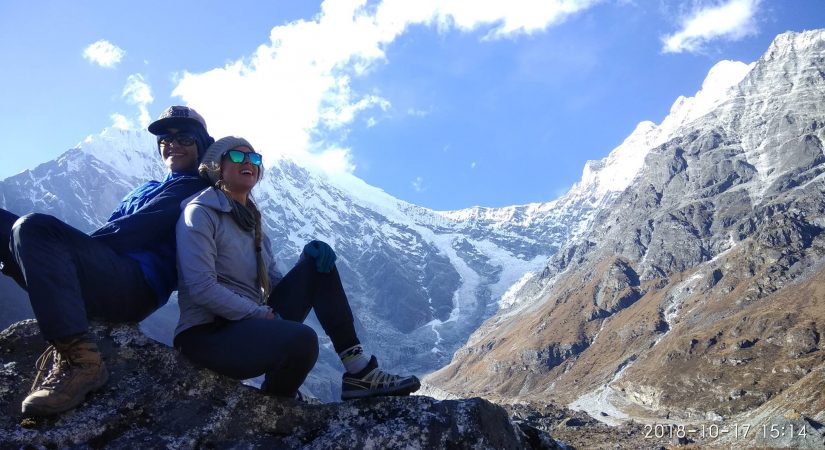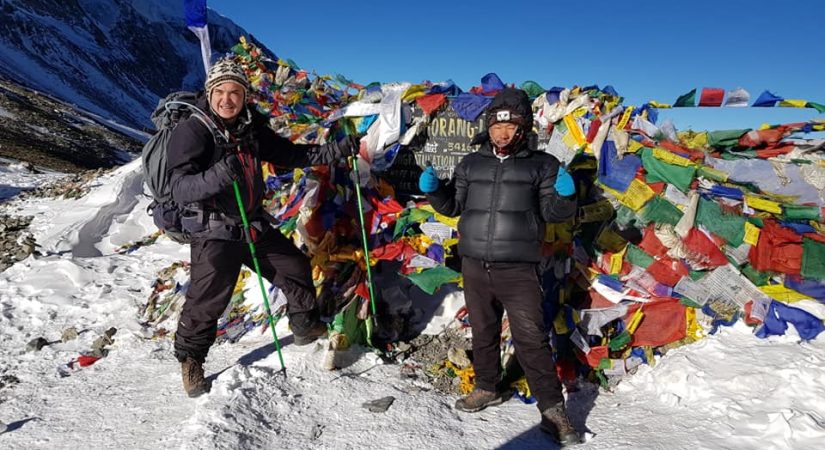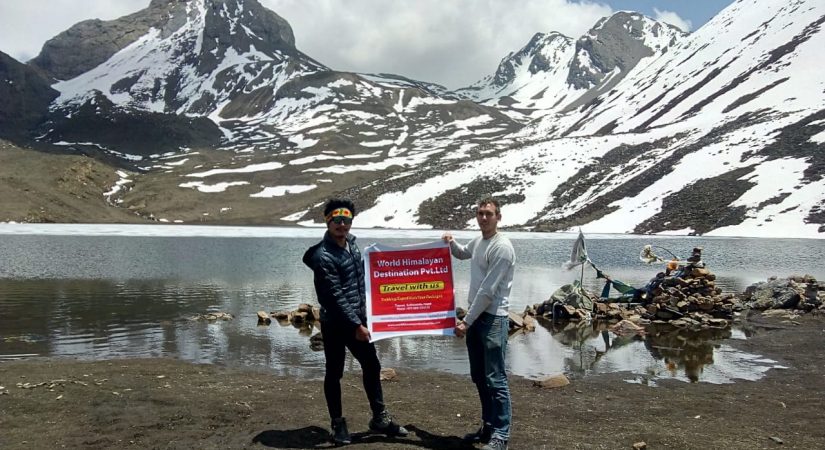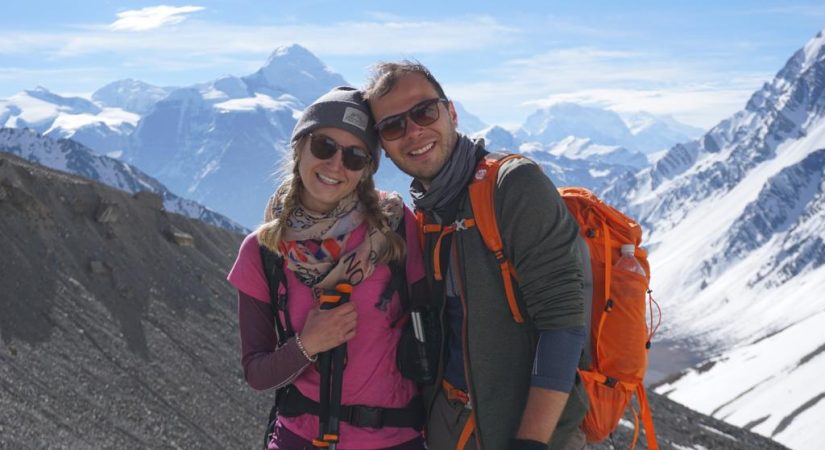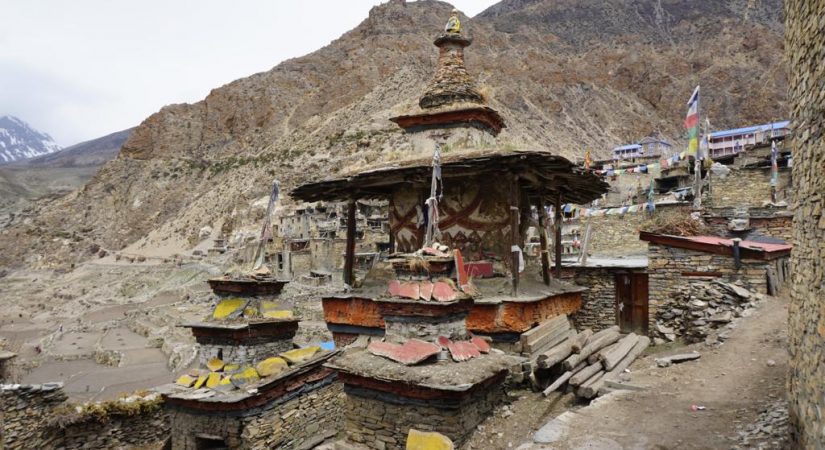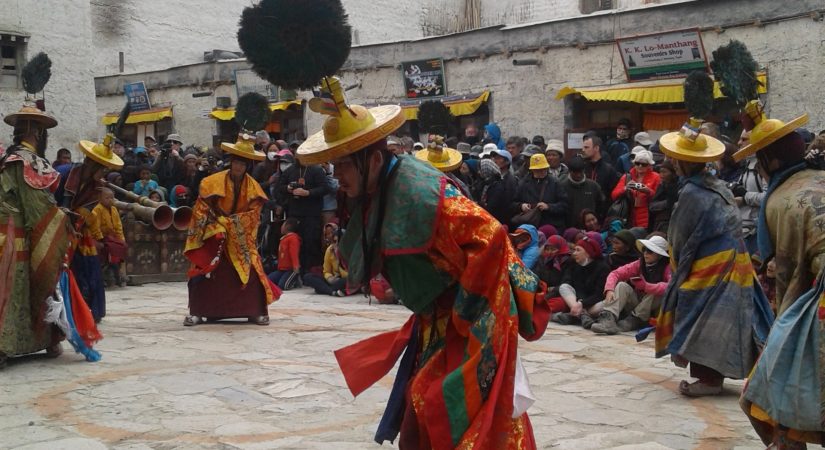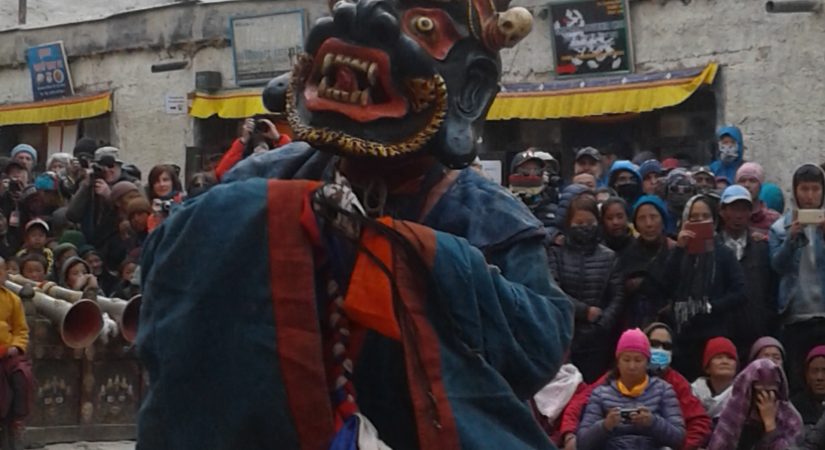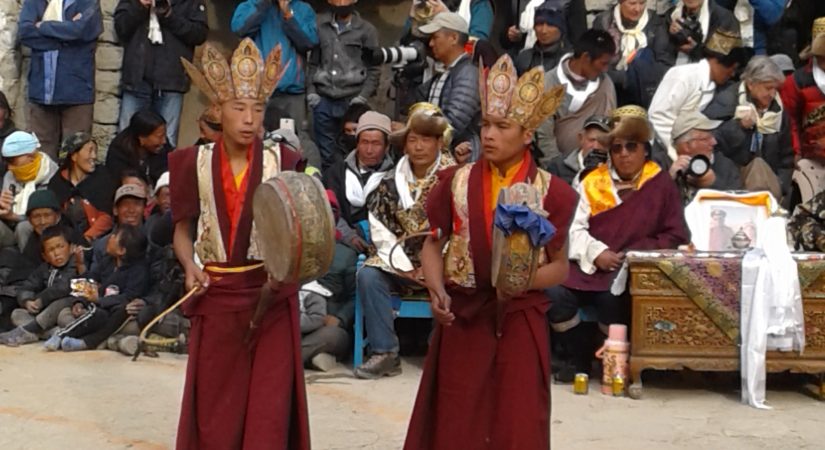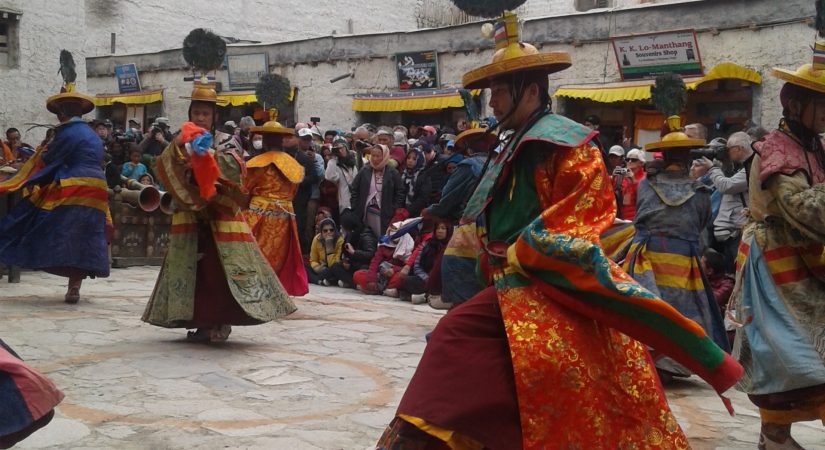1-12 people
Moderate
Tea House / Home Stay
5,416m/17,764ft
B / L / D
Public Bus
Mar - May & Sept - Nov
Narphu vs Kangla pass
Nar Phu Valley Trek via Annapurna Circuit is a rugged and wild trek that takes you to the exotic valley of Nar Phu, one of the remote and alluring regions located on the north of Annapurna. Nar Phu Valley Trek is a restricted trekking trail. A special trekking permit through government registered Nepal trekking Agency and a minimum of two people are required to obtain the Nar Phu valley trekking permit. A fantastic journey to the wild and unexplored vicinity located north of Annapurna, this rugged and wild trek takes us to the exotic and enthralling valley of Nar phu. Nar Phu Valley trek starts from Jagat following the popular trekking routes of Annapurna Circuit trail and then branch off from Koto to follow the off the beaten track to Nar Phu valley in the north of Manang and pass the Kang La pass with a magnificent panorama of Annapurna massifs. The Kang La pass links Nar with Manang and three other Bhotia villages in the Neyshang valley.
Nar Phu valley system above opens up to a huge expanse of high snow-peaks, ancient villages, and high altitude grazing settlements. Ancient Buddhist monasteries and grand views of the Annapurna Range are the main attractions. The diverse cultural and mountain aspect of this trip is simply outstanding. Trekking to this hidden mountain valley offers medieval Tibetan culture in undisturbed form, dramatic mountains view and great alpine sceneries. We then head west over the Thorong La Pass and down through the lower Mustang before heading on to Jomsom. We finally fly back to Pokhara and drive back to Kathmandu the next day.
Trip Outline
Day 01: Kathmandu to Besi Sahar and Khudi Bhulbhule Drive (1100m/3608ft): 8-9 hours
Day 02: Khudi to Dharapani (1,960m/6,430ft): 7-8 hours
Day 03: Dharapani Chame (2,610m/8,563ft): 7 hours
Day 04: Chame to Meta (3,560m/11,680ft): 7-8 hours
Day 05: Meta to Phu Gaon (4,250m/13,944ft): 7-8 hours
Day 06: Acclimatization at Phu Gaon
Day 07: Phu Gaon to Nar (4,110m/13,484ft): 6-7 hours
Day 08: Nar to Kang La Pass (5,322m/17,460ft) to Ngwal (3,660m/12,008ft): 7-8 hours
Day 09: Ngwal to Manang (3,540m/11,614ft): 4-5 hours
Day 10: Acclimatization in Manang.
Day 11: To Khangsar (3,734m) – 4 hours: Today we continue our adventure towards Tilicho
Day 12: To Tilicho Base Camp (4,200m) – 5 hours / Tilicho Lake 4920m :Continuing from Khangsar on a
Day 13: Trek to Yak Kharka via Thorong Phedi (4,600m/15,092ft):6 hours
Day 14: Thorong Phedi via Muktinath to Jomsom (2,715m/8,910ft): 8-9 hours (5,416m/17764ft)
Day 15: Jomsom to Tatopani (hot spring) Drive: 7 Hours off road.
Day 16: Tatopani via Beni Pokhara
Day 17: Pokhara to Kathmandu (1,300m/4,428ft): 5-6 hours’ drive
Detail itinerary
Day 01: Kathmandu to Besi Sahar and Khudi Bhulbhule
9 Hrs B/L/D Tea House
We can see attractive views of Nepali countryside, lush greeneries, rivers, villages, farms and mountain vistas en route throughout the drive. After 8-10 hours of drive we reach Khudi via Besishahar. Drive up to Besishahar will most likely be smooth owing to black-topped roads whereas after Besishahar, the roads get dusty and coarse but the scenic view from our windowpane is more than compensating for the bumpy ride. Overnight in Khudi
Day 02: Khudi to Dharapani
8 Hrs B/L/D Tea House
The trail from Jagat descends until it reaches the river and then continues through a lush forest. Further ascent leads to sharp-edged cliff facing the riverbank. En route, Chyamje comes into picture amidst the glorious backdrop of towering Annapurna mountain ranges. After crossing a suspension bridge, we climb steeply towards the slippery and physically challenging path to Sattale. On treading along a succession of rock-strewn trails, we descend to a grassy riverbank that leads to Tal. As we walk away from Tal, the path becomes rugged and winding. Then we approach steep forested village of Karte. Meandering along the waterfalls and cliffs, we finally reach Dharapani after crossing a suspension bridge. Overnight in Dharapani.
Day 03: Dharapani Chame
7 Hrs B/L/D Tea House
We begin our trek in the morning towards Bagarchhap which takes about one hour passing through pine and fir forests. We can visit the white washed monastery in this village. Then we continue our trek till Danaque which takes about an hour. The trail is steeply ascending up to Timang. We have a good view of Mt. Manaslu and Peak 29 from here. Now the trail continues through pine forests again till Latamarang which takes about one and half hour. We break for lunch here and again resume through forests whereby we have a short glimpse of Annapurna II. Finally we arrive in Chame village.
Day 04: Chame to Meta
8 Hrs B/L/D Tea House
In the morning, we register our restricted area permit at the Police Check Post. Then we trek through the River bank of Soti Khola again through wonderful pine forests, streams and suspension and reach Dharmasala. We have our packed lunch on the way. We then continue the trek through forests and ascend steeply towards Meta village. Finally we arrive on the Tibetan Plateau where we have a very good view of Annapurna II and Lamjung Himal. Overnight in Meta.
Day 05: Meta to Phu Gaon
8 Hrs B/L/D Tea House
We start our day traversing up and down and crossing suspension bridges over different streams. After almost 4 hours of trek we reach Kyang where we can see the remnants, particularly the ruined forts of the Khampa settlement (the place which Khampa refugees from Tibet once captured and lived). We further keep walking past the Phu Khola on a rocky trail and finally reach the Phu village in another 3 to 4 hours. Overnight in Phu Gaon.
Day 06: Acclimatization at Phu Gaon
3 Hrs B/L/D Tea House
Today is the scheduled acclimatization day whereby we are suggested to rest and get acclimatized with the altitude. As we are in the Lost/Hidden Valley, we can explore the culture, natural diversity, and religious practices of the ethnic groups like Lama, Gurung and Ghale in here. Besides this, we can trace out how people make their survival depending on agriculture, animal breeding and seasonal migrations in such remote location or in the hidden valley. It is also the day for us to explore the Tashi Lakhang Monastery – the old Buddhist Monastery listed out of the 108 world’s great Buddhist Monasteries; it is supposed to be the last monastery constructed by Karmapa Rinpoche. Apart from exploring the cultural avenues of the lost valley, the valley also offers us a great view of Himlung Himal and other snow peaks in the region. Overnight at Phu Gaon.
Day 07: Phu Gaon to Nar
7 Hrs B/L/D Tea House
The trail descends passing many streams and suspension bridges until Mahendra Pul which takes about 4 hours. We pass the high suspension bridge 80m over the Gorge of Lapche River. We have lunch in Mahendra Pul. After lunch, the trail steeply ascends passing many Buddhist stupas until Nar Village which takes about 2 hours. We find several Buddhist Monasteries here to visit coupled with the glorious vistas of Pisang Peak and other small peaks. Overnight in Nar
Day 08: Nar to Kang La Pass
8 Hrs B/L/D Tea House
Today is adventurous day with long day hike so we get up early in the morning and head to Kangla pass. From pass we can see the Annapurna massif. We further trek down to Ngwal from there. Overnight in Ngwal.
Day 09: Ngwal to Manang
5 Hrs B/L/D Tea House
From Ngwal, we head for Manang today. We pass through the isolated village of Paugh overlooking the amazing views of Annapurna range. We then move gently uphill to Mungli and then to the main trail of Annapurna Trail at Mungli. We eventually reach Manang, where we set up our camps for overnight stay. Overnight in Manang.
Day 10: Aclimatization in Manang.
3 Hrs B/L/D Tea House
Day 11: To Khangsar
4 Hrs B/L/D Tea House
Today we continue our adventure towards Tilicho Lake. Leaving Manang by its western gate, we descend to the river, cross it on the bridge below Khangsar and ascend the slope to the village, still in the old Tibetan style, and also known as the last village of Nepal.
Day 12: To Tilicho Base Camp
5 Hrs B/L/D Tea House
Continuing from Khangsar on a on a recently constructed path, we pass a Gompa (monastery) up towards a high ridge. At an intersection, we choose between two paths. One maintains the altitude, traversing the slopes towards a narrow valley; the other continues to ascend towards the ridge line. The former is the old path, and is much more difficult because of its steepness and scree surface. The latter is the new path that goes a completely different way. We take the new path, reach a high crest, and descend on switch backs carved out through the scree slopes to a side valley of the main valley. At its bottom is a brook. On the other side is a building known as Tilicho Base Camp (4,200m
Day 13: Trek to Yak Kharka via Thorong Phedi
6 Hrs B/L/D Tea House
From Manang village, the trail crosses a stream, climbs to a village of Tenki above Manang, and then continues to climb out of the Marshyangdi Valley turning northwest up the valley of Jarsang Khola. The trail follows this valley northward, passing a few pastures, a scrub of juniper trees, as it steadily gains elevation. The trail further passes near the small village of Ghunsa, a cluster of flat mud roofs just below the trailhead. Now the trail goes through meadows where horses and yaks graze. After crossing a small river on a wooden bridge, the trail passes an ancient old Mani wall in a pleasant meadow and then reaches another small village of Yak Kharka.
Day 14: Thorong Phedi via Muktinath to Jomsom
10 Hrs B/L/D Tea House
Crossing the arduous Thorong La Pass at a dizzying height of 5,416m/17,764ft is another highlight of this trek. An early start is important to go through the icy high-altitude trail. But the picturesque mountain vistas are more than compensates the strenuous walk through the grueling trail. We reach Muktinath by sunset which is an important pilgrimage site for both Hindus and Buddhist. We can stroll around the area which hosts a Vishnu temple and a Monastery nearby.
Day 15: Jomsom to Tatopani
7 Hrs B/L/D Tea House
After getting to Jomsom you have to travel through Tatopani which is hot spring by driving 7 hours off road.
Day 16: Tatopani via Beni Pokhara
7 Hrs B/L/D
We get some rest and explore the beauty of Pokhara Valley in the evening. While we leisurely walk along the bank of Fewa Lake, the second biggest lake of Nepal while admiring the mountain view of Machhapuchhare. We can also go for a boat-ride in Fewa Lake or take a short hike to the World Peace Pagoda. We can end the day with a leisurely stroll around the mesmerizing lakeside area.Overnight in Pokhara.
Day 17: Drive to Kathmandu
8 Hrs B
What's included?
- All Transport
- Trekker’s Information Management System(TIMS) card
- All governmental procedure fees, all permits and local taxes.
- All meals and accommodation throughout the trek.
- An experienced English speaking trekking guide possessing valid license issued by the government of Nepal.
- Highly experienced trekking staffs.
- Travel and rescue arrangements.
What's not included?
- Visa fees/ international airfare to and from Kathmandu
- Travel / medical insurance and emergency evacuation cost.
- Hot and cold shower, battery recharge during Everest base camp trek.
- Personal expenses phone calls, bar bills, extra porters, beverages etc.
- Personal Everest base camp trekking equipments/gears.
- Tips for guides, porters and drivers.
- All others expenses not mentioned in “Trip Cost Includes” section

